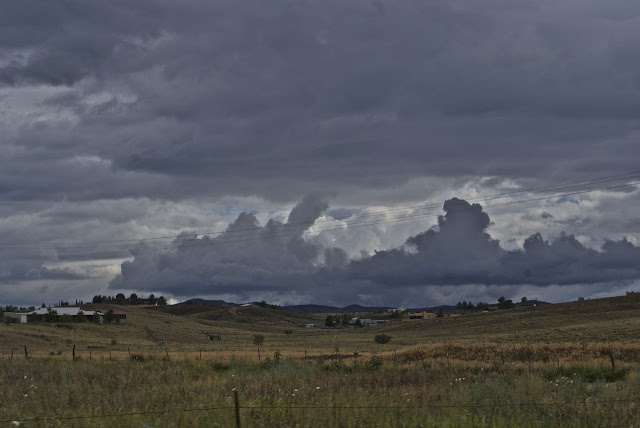The Los Angeles County Museum of Art, or simply LACMA has been located on Wilshire Boulevard since 1965. Architecturally, it has gone through a number of changes and expansions over the years but, its position in Los Angeles has remained the same. When I get a chance to visit, I enjoy walking between the two buildings and admiring the colorful design of the modern art wing.
The series of stairs, escalators and platforms make think of a huge carnival ride. The top is a great place to look out over the Hollywood Hills and.....
....maybe get a glimpse of that famous Hollywood sign!
When I was there last summer, I specifically wanted to see the David Hockney exhibit called "82 Portraits and 1 Still Life" that I wrote about last year. Once I had taken in all those colorful portraits, I moved on to some other exhibits like this one called "50 Kitchens" by Mark Grotjahn. Being in the two rooms with the 50 dynamic colored-pencil, geometric drawings can make one feel a bit dizzy if you move around them too fast. Each one was made with two different colors for the background and lines. They quickly became a magnet for selfie photos. Imagine someone standing in front of this painting and letting those lines radiate out from behind.
Not being much of a "selfie" taker myself, I left that to the younger set.
I also visited Richard Serra's wonderful sculpture called "Bond" once again. Serra spent most of his career examining humanity's metaphysical bond with physical space. I'm not sure about the metaphysical part, but I love the smooth lines and the sheer size of this monumental piece of steel. I love walking around it and inside it.
When I cross that center walkway between the two buildings, I can't pass up another opportunity to snap photos of Chris Burden's "Urban Light" assemblage. It's located right on Wilshire Boulevard so you don't even need to enter the museum to enjoy this brilliant piece.
Inside the Ahmanson Building, there was another interesting exhibit called "To Rome and Back". I sat for a while on that bench and studied "Stair and Fountain in the Park of a Roman Villa " by Hubert Robert. It's based on the real Villa d'Este.
You can't tell from this photo that this is a micro mosaic and not a painting. In fact, I had to get very close to it to see the tiny chips of marble. No artist was given for this amazing piece.
I'll end this series with this photo from a few years ago on a visit when I had dinner at the museum and so got to see "Urban Lights" all lit up. The museum might be closed but, this piece is still drawing crowds.










































